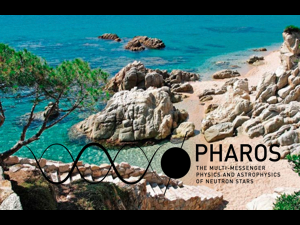Speaker
Dr
Guillermo Rodriguez
(National Institute of Astrophysics - Astronomical Observatory of Rome)
Description
The discovery of Ultraluminous X-ray Sources (ULXs) showing fast and rapidly evolving pulsations (PULXs) unambiguously associated
these sources to neutron stars (NSs) exceeding up to more than 500 times their Eddington Luminosity . These discoveries challenge our
understanding of accretion physics and pose a key question about the nature of the ULXs as a class, thought to represent the population
of extragalactic intermediate-mass or stellar-mass black holes (BH) until few years ago. Shaping the number and properties of of this new
class of NSs, and understanding the way they evolve and work is therefore also important for the understanding of the ULXs population
in general.
However, so far only a handful of PULXs have been discovered and the search for new ones is in progress. Their detection is hampered
by their extreme timing properties, among which are the highest first period derivatives ever recorder for a NS coupled with orbital motion.
In this talk I'll describe how the properties of the known PULXs, and the extensive use of High Performance Computing are put together,
with the aim of looking for new member of the class both in archival and new requested datasets from high energy missions.
Primary author
Dr
Guillermo Rodriguez
(National Institute of Astrophysics - Astronomical Observatory of Rome)

